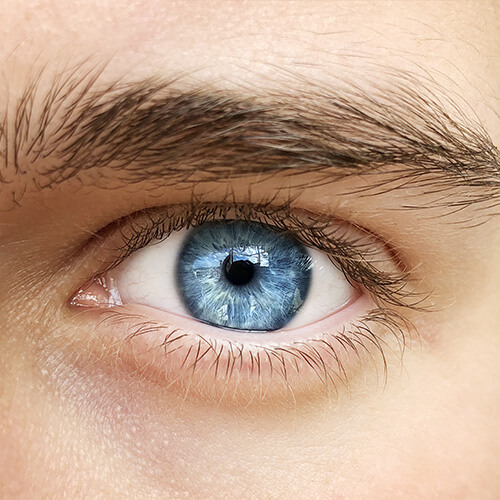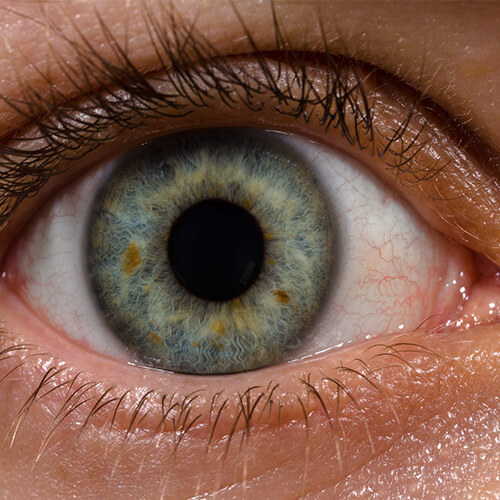
-
What is dacryocystorhinostomy
A dacryocystorhinostomy creates a new pathway between the lacrimal sac and the inside of the nose, by removing a thin bone between them. Any blockage or narrowing of the nasolacrimal duct is completely bypassed with this surgery.
-
External vs endonasal dacryocystorhinostomy
A dacryocystorhinostomy has traditionally been performed through a small skin incision at the side of the nose (external dacryocystorhinostomy). Nowadays, it can also be carried out through the nose (endonasal dacryocystorhinostomy).
Endonasal dacryocystorhinostomy avoids a skin incision and the results are pretty much equal to external dacryocystorhinostomy. Endonasal dacryocystorhinostomy may not be a suitable procedure if the obstruction is not in an appropriate location or there is a problem within the nose.
Dr Mavrikakis carries out both external and endonasal dacryocystorhinostomy and will recommend the best approach for you. A fine, soft silicone stent may temporarily be left in the new tear drain for a few weeks to keep the duct open while healing occurs.
The operation takes about one hour, is an outpatient procedure, and can be performed under a general or local anesthetic with intravenous sedation.
The procedure has a very high success rate (reduction of symptoms in at least 90-95% of individuals in the hands of experienced oculoplastic surgeons).
-
Before dacryocystorhinostomy
Medications either containing, or being similar to, Aspirin, need to be stopped 2 weeks before surgery as long as your doctor confirms that it is safe to do so. Anti-inflammatory medicines should also be avoided for 2 weeks before surgery.
If a patient has been prescribed these or any other blood-thinning drugs (such as Warfarin or Clopidogrel), your doctor will need to be contacted to determine if it is safe to discontinue these medications prior to surgery to reduce the risk of bruising and a post-operative nose bleed, which, although rare, can be severe.
Paracetamol does not affect bleeding and can be taken before and after this surgery.
-
After dacryocystorhinostomy
After surgery, to reduce the chance of a nose bleed, hot drinks are avoided for 24 hours, and there should be no nose blowing or strenuous exercise for 2 weeks.
If sneezing is unavoidable, pressure should not be allowed to build up in the nose.
It is advisable to sleep on an extra pillow or two for the first few nights, and driving (including operating heavy machinery), alcohol, and sedative drugs should all be avoided for at least 24 hours.

If the eye pad has not been removed in the hospital then it should be removed the next morning at home. Normal washing is permissible, with care taken to avoid rubbing the eye. The wound should be kept uncovered.
The first review occurs 1-2 weeks after surgery, when the skin stitches (external dacryocystorhinostomy) are removed and the eye examined. At the second clinic visit 6-8 weeks after surgery the silicone stent is removed and no further routine review is necessary in most cases.
Many patients continue to have a watery eye for some weeks after surgery until the swelling and inflammation settles, and the silicone stent in the nose is removed.
Although the skin incision heals over a few weeks, internal swelling and healing may take many months to settle, and thus some occasional watering can persist for several months after surgery.
-
What are the complications of dacryocystorhinostomy
The main complications following a dacryocystorhinostomy include:
nose bleed, swelling, scar formation, infection and further surgery.
A nose-bleed may occur in about 2% of patients within the first 10 days after surgery. In most cases the bleeding will stop spontaneously.
The degree of swelling over the inner corner of the eyelids after surgery can vary markedly, some reporting little or none, and others experiencing some swelling and bruising which takes up to a week to settle (the latter being unusual).

The incision on the side of the nose (external dacryocystorhinostomy) typically settles very well, becoming visually insignificant in time in most patients. However, in about 1 – 2 % of patients, the linear scar is visually troubling, and may require local massage to soften it.
Infection is a rare complication of surgery and is treated with antibiotics.
Rarely, the normal healing reaction in the nose can lead to the formation of a fine membrane across the internal opening, with recurrence of the original watering symptoms.
Over half of such patients respond to removal of the membrane and reinsertion of the silicone stent in the nose under a brief general anesthetic.
In other patients (and especially if there has been previous trauma), the procedure described above is inadequate to allow tears to drain into the nose.
In this situation, the only way to drain the tears is to insert a small, smooth, Pyrex glass tube (often referred to as a Lester Jones tube) through the inner corner of the eyelids to the nose (without any further skin incision) under a brief general anesthetic.
This tube remains permanently in place, although it can move slightly with blinking. Although requiring an annual review in clinic, and periodic repositioning in some patients, a Lester Jones tube can be highly effective.
Eyelid, Lacrimal & Orbital Diseases
Learn more about the disease you are interested in

